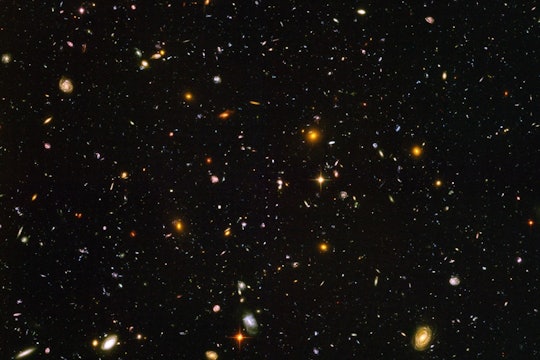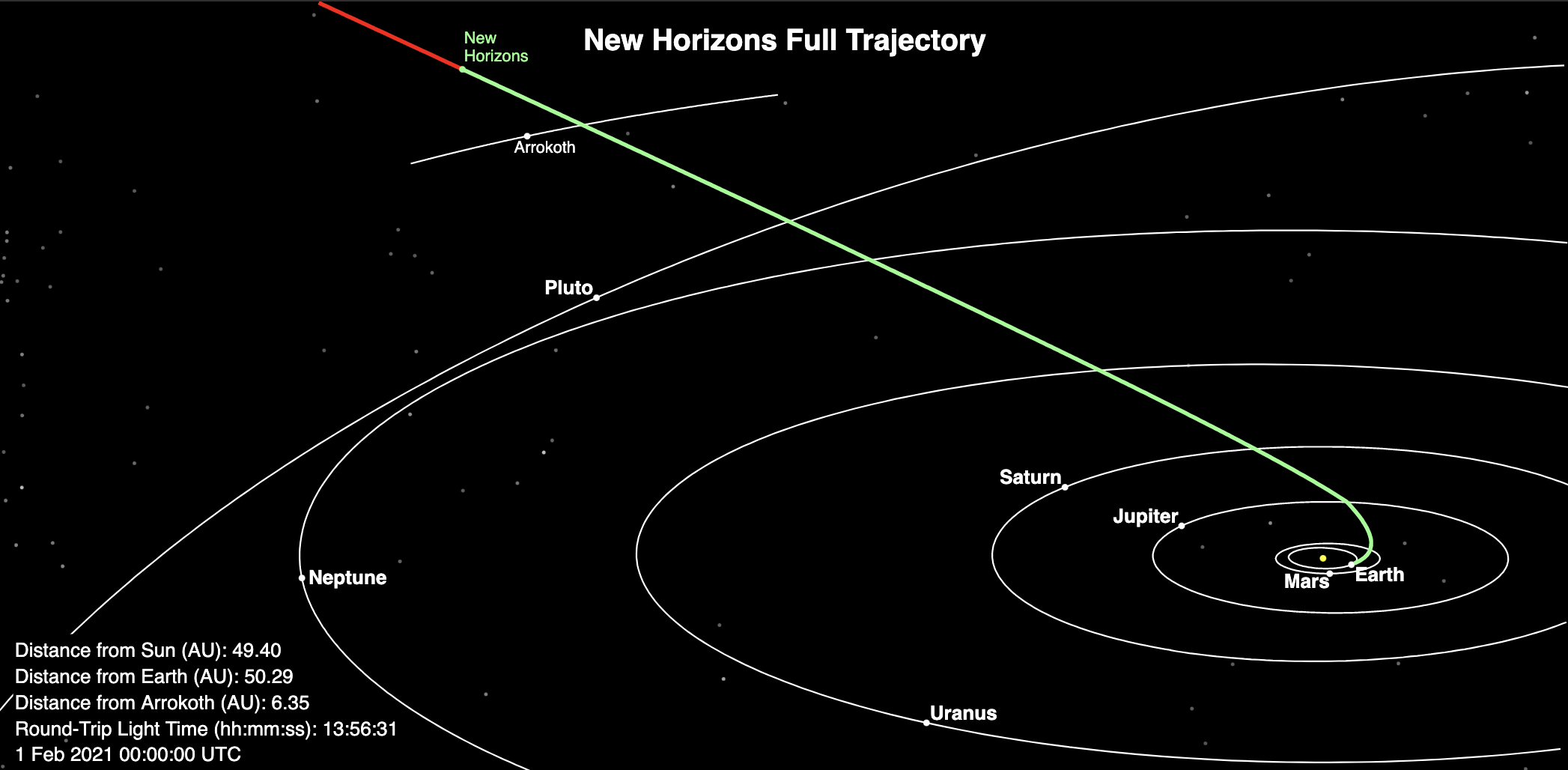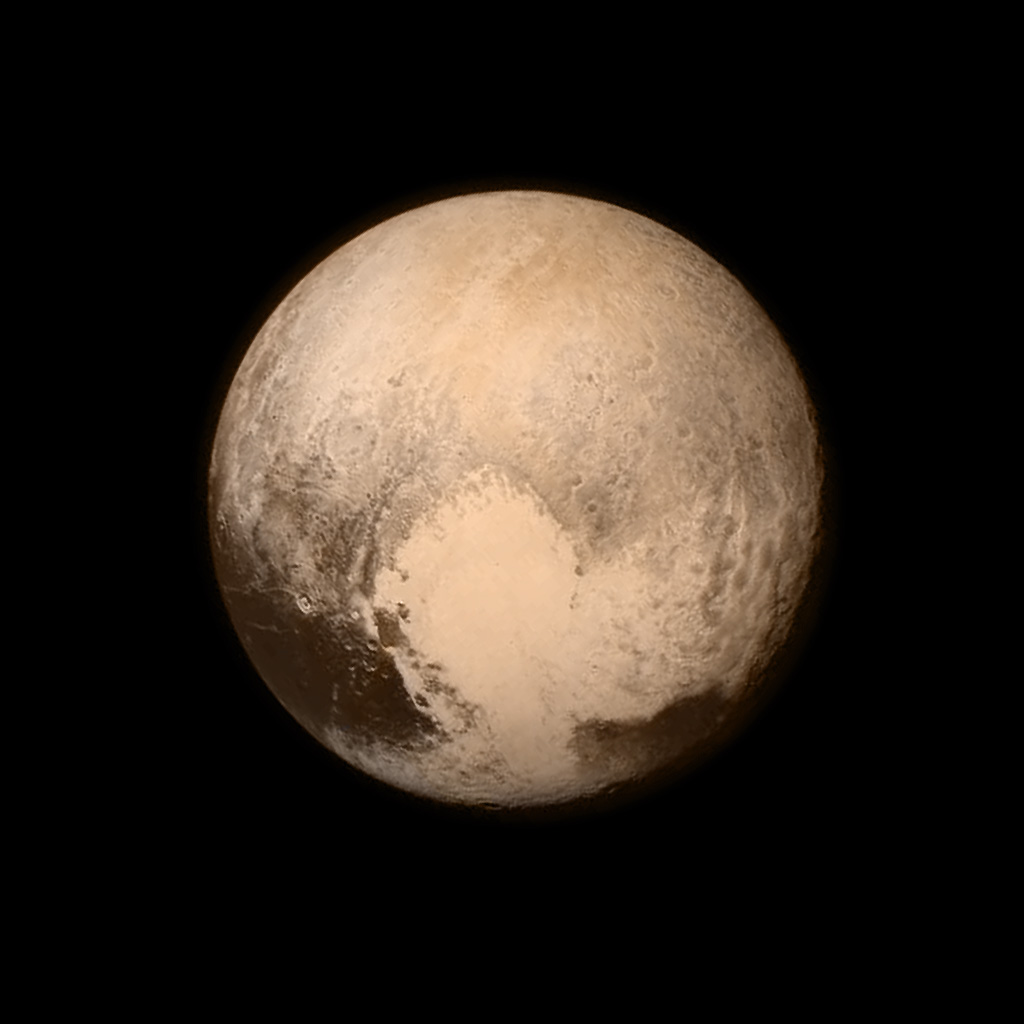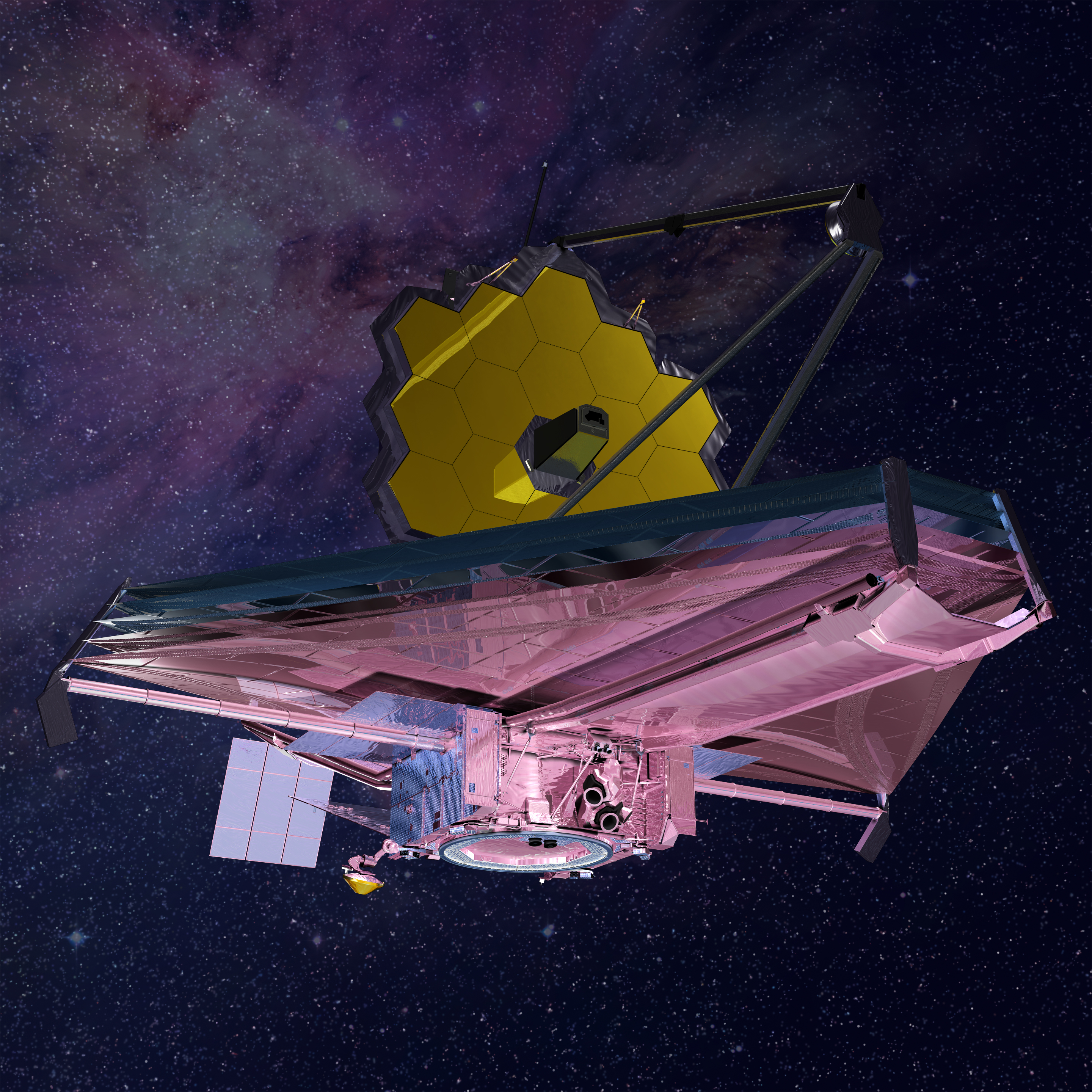
NASA, ESA, S. Beckwith (STScI) and the HUDF Team
How dark is outer space? The New Horizons spacecraft is helping astronomers find out
Measurements from beyond Pluto shed light on the "fossil record" of our universe
If you go outside at night and look up, you may marvel at how dark the night sky is. If you’re in a city, its inky color might be obscured by streetlights — but, if you’re camping out in the desert, it’ll look like a deep black void, sprinkled with bright stars and maybe even a smear of the Milky Way.
It's remarkable that space appears so deep and dark, since we have city lights, Earth's messy atmosphere, and the Sun's glare impeding our view of it. So, how dark is it actually out there? Astronomers are using the New Horizons spacecraft to answer that question.
New Horizons was launched in 2006, and it traveled for almost 10 years (and over 3 billion miles!) to reach its target, the dwarf planet Pluto, in 2015. Since its historic flyby of Pluto, it’s been traveling even farther away from Earth, flying through the Kuiper Belt, the region of our outer solar system filled with chunks of ice and rock.

The trajectory and current location of the New Horizons spacecraft
New Horizons / JHU APL http://pluto.jhuapl.edu/Mission/Where-is-New-Horizons.php
Although it was intended to study Pluto and the Kuiper Belt, New Horizons can provide scientists with lots of other interesting information about what it’s like at the outer reaches of our solar system. For example, New Horizons measured the thickness of the interstellar medium (the particles in the seemingly empty space between stars), and it made the first measurement of interstellar parallax (how the positions of stars appear different from beyond Earth). Recently, a team of astronomers used images from the spacecraft to measure the cosmic optical background (COB), or the average amount of light we see over the observable universe.
Given where it is in our solar system, New Horizons is uniquely suited to this task: in order to see the faint light of the COB, you need to escape the bright glare from dust that scatters sunlight in the inner solar system (the “zodiacal light”). We don’t have many fully functional spacecraft that have made it this far from Earth, so this is a rare opportunity to measure the COB.
Measuring how dark space truly is tells us about the evolution of the universe, since the COB is the sum of all star formation in the history of our universe. Like a "fossil record" of the universe, this measurement helps scientists discriminate between different theories of how galaxies form and evolve. But there are many sources of light contributing to what New Horizons sees in its cameras, including light reflecting off the spacecraft, the glare of the Sun, and starlight. So, the hardest part about measuring the COB is figuring out how much light is coming from each source.
In order to measure the COB, the researchers had to first account for all of the light sources they knew were coming from inside our galaxy. Starting with the New Horizons spacecraft itself, they corrected for known flaws in the spacecraft’s cameras. They then removed scattered sunlight from our solar system, light that scattered off the cloudy dust of our galaxy, and all the light from stars within our galaxy.

An image of Pluto taken by NASA’s New Horizons spacecraft on July 13, 2015
NASA/APL/SwRI
The amount of light remaining was the COB — all the light from beyond the Milky Way. Some of this light can be attributed to galaxies we can see in images from other telescopes, and some of it must be from galaxies we can’t resolve. A previous study counted the number of galaxies seen in the Hubble Ultra Deep Field (HUDF), one of the deepest, most comprehensive pictures of the night sky we have even though it covers just a narrow patch of outer space. Using mathematical models, the astronomers estimated that there could be two trillion galaxies in the universe, 90 percent of which wouldn't be visible in a HUDF-caliber image covering the entire sky.
Based on these new measurements from New Horizons, the researchers estimate that there could be twice the number of galaxies in the universe than we can currently observe, but far fewer than the earlier study from Hubble predicted. This still leaves us with hundreds of billions of galaxies, reminding us that the universe really is mind-bogglingly huge!

An artist's rendering of the James Webb Space Telescope
Northrop Grumman
The big remaining question is how much light really is coming from those unseen galaxies. The researchers created a model that describes how many galaxies there are at different brightnesses. This model might not predict enough faint (and therefore unseen) galaxies to account for all the light that New Horizons measured. And if there is extra light left over, it could be an exciting sign of the "diffuse cosmic optical background" (dCOB). The dCOB is light from sources that we can't recognize in images, like far off stars from the early universe or maybe even the decay of dark matter.
Hopefully future telescopes — like the James Webb, launching in October 2021 — will be able to peer deeper into the sky than ever before, finding some of these previously unresolved galaxies and solving this mystery.




Super interesting, Briley!
You mention that one of the most difficult parts of taking these measurements is separating and properly accounting for the different sources of light in the images taken by New Horizons. Scientists have previously made measurements of the amount of light emitted by the sun, so it seems reasonable that they’d be able to subtract that out accurately. For (presumably) less well-understood sources, like reflections off of the spacecraft itself or scattered light off of dust clouds, how do scientists determine how much light is coming from each of those separately?
Perhaps more importantly, how big are those contributions compared to the sun, and how wide are the error bars? I’m curious whether a significant error in calculating and subtracting out the scattered light from our solar system (such as being off by a factor of two, or even ten) would make a noticeable difference in the estimation for the total number of galaxies in the universe.